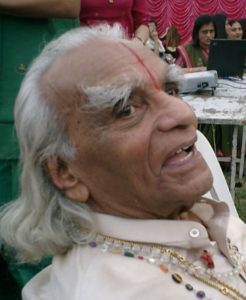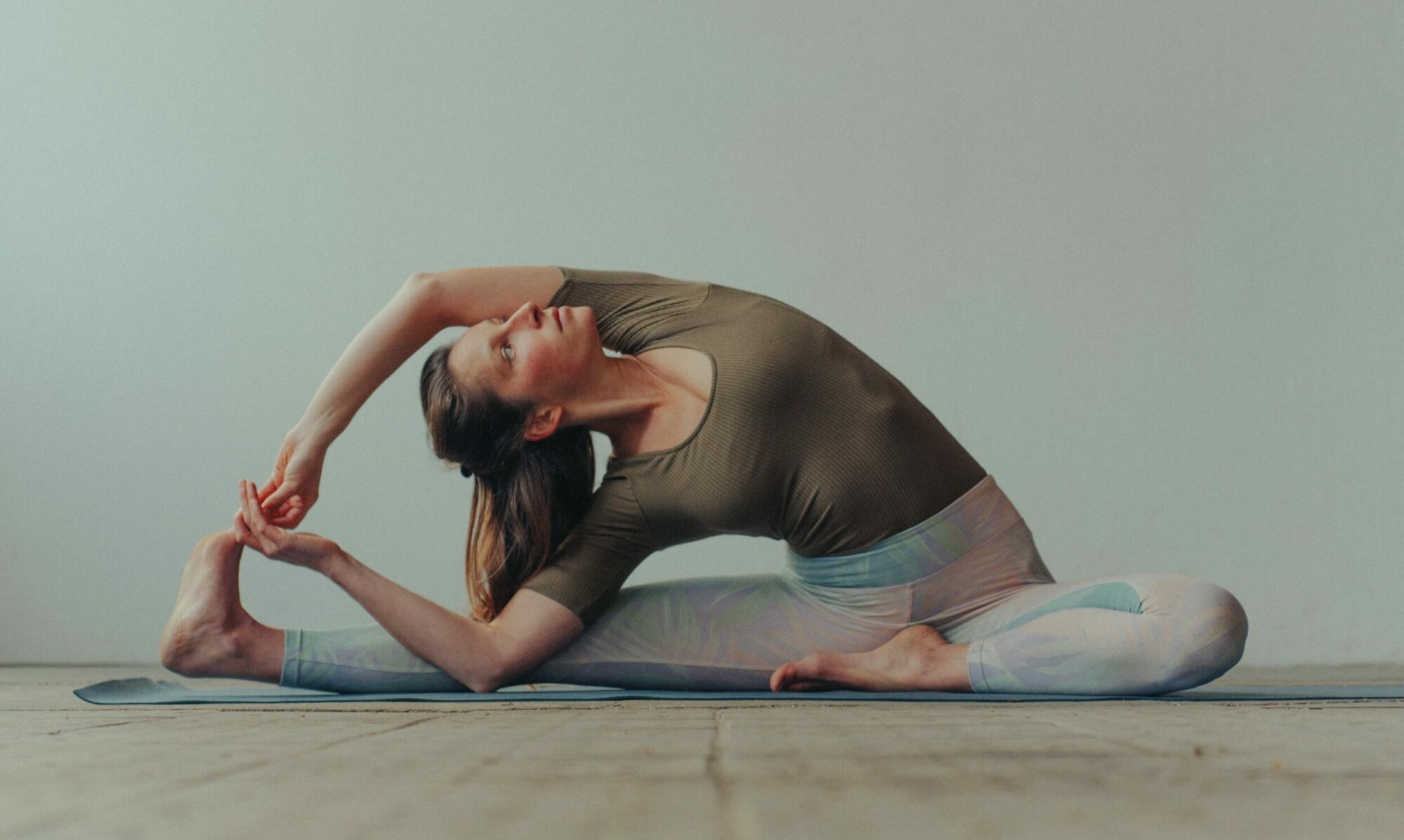
B.K.S. Iyengar
(1918 – 2014), a cousin of Krishnamacharya, was sent to Poona by Krishnamacharya after a very short period of training to open his own yoga school. There he developed his own style and became world-famous with his Iyengar Yoga .
He practiced the asana standing still, i.e. statically with sometimes enormously long holding times. He practiced long holds by coordinating all possible muscle tensions, also under the influence of gravity with the help of many different aids, which was characteristic of his style and still is today. He thus emphasized the so-called “alignment”, the alignment of the entire body into an ideal overall posture, which was ultimately maintained in the still movement. He did not have any specific sequences, but practised them in individual selections and practised each position standing on its own.
Breathing does not play a primary role for him. Although he specifies exactly how to breathe for each position, the alignment of the limbs and the tension of the muscles within the body are of primary importance. If the body is perfectly aligned, he says, then breathing should be able to flow freely.
Here is an impression of his personality and training style:
Here is an unusual insight into Iyengar’s practice room. Father Joe Peira, a student of Iyengar, teaches there. Please also note the (English) text with the question of whether the statements correspond to the pictures.
Iyengar lived and worked mainly in Poona, where his school still exists today. He did an enormous amount of work in the first few years because, according to his own statements, he only received two weeks’ teaching from his teacher Krishnamacharya before he sent him to Poona. What he produced, he developed out of himself in an enormous and remarkable discipline. In his interviews he rarely speaks well of his teacher, in fact he usually speaks badly of him.
The interviews give me personally the impression that he received too little attention from Krishnamacharya. He obviously never forgave him for sending him away early on without sufficient training.
Effective marketing for the public
It was only later that he was gradually discovered by Americans and Westerners and invited on lecture tours to America. Iyengar can be seen in countless interviews, in his own practice and demonstrations, as well as in teaching films. He is popular with the public and markets himself well. To get a differentiated picture of his personality, you can watch some of his films on YouTube.
However, he retired from teaching in 1984 and his students continue to teach to this day.
Light on Yoga and Light on Pranayama are two essential standard works by him.
His spiritual world view
In his interviews, the Indian way of thinking and the Indian world view can be easily understood. He once described how he sees his physical exercise practice in terms of spiritual realization:
“It is intelligence that expands the body, into the position and out of it again. My intelligence grows one centimeter beyond my body. With the feeling of universality, my consciousness leaves me. I lose my sense of identity – that is why it is my prayer, because it brings me to the divine. From the beginning, the practice leads me to the divine. That is why they are my prayers.”
What exactly he understands by “intelligence” remains to be seen. What is interesting, however, is how he describes how consciousness leaves the body, expands into universality and the practitioner thus loses his sense of identity. And then he is united with the divine, which leads to the conclusion: This is why the physical exercises are prayers.
He thus describes the classic image of reconnection with the divine, which goes hand in hand with the dissolution of identity and a transition into a universal, cosmic state.
Iyengar founded a strongly body-focused yoga in which the spiritual background does not play a major role. Nevertheless, as an Indian in his time, in contrast to us Europeans today, he was probably even more strongly connected to the cosmic prana currents and was still able to perceive them sensitively.
Click here for the Iyengar Yoga practice
Go to page: Patthabi Jois – Ashtanga
Bildquellen
